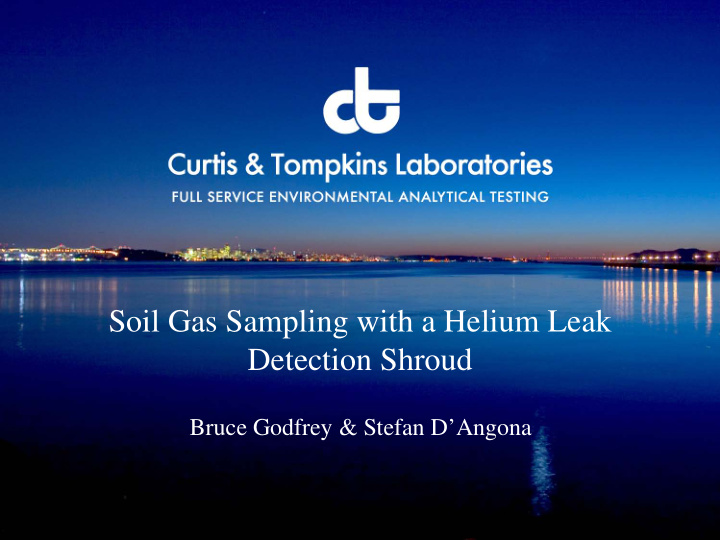



Soil Gas Sampling with a Helium Leak Detection Shroud Bruce Godfrey & Stefan D’Angona
Introduction a. Leak Detection Options b. Helium Leak Detection c. Leak Tracer System Design d. Use and experience
Why Leak Check? Proof of Sample Integrity Leaks result in sample dilution • Leaks in Train Fittings • Down Well Leaks
Leak Testing Options • Liquid Tracer • 2-Propanol (IPA) • Qualitative, interferes, raises RL’s • Helium • Quantitative, no interference • “Pain in the neck”
Helium Advantages • Frequently used for leak detection • Inert, doesn’t interfere with targets • Easily Measurable • Allows estimate of dilution
Why Build & Rent He Shrouds? Our clients asked us Design using best available technology Lab resources required cleaning, maintenance, testing, validation
Design Considerations • Guidance compliant • Small: Packaging & Transport • Minimize field tubing connections • Real Time leak detection before sampling • Scalable: 12 wells/8 hours • Low Cost & Simple to Use
Shroud Components
Helium Detectors Flow Through and Diffusion Cell Diffusion Detector inside shroud Flow Thru Detector in purge line Small, lightweight, portable, simple Battery Powered Quick, Accurate, Precise
Helium Detectors
Costs • Shroud equipment rental adds $70 per sample for 8 wells • $235 for the first sample • Additional field labor costs • What circumstances justify extra costs for a QC procedure?
Shroud/Train Prep • Disassemble Shroud/Train/Valve • Clean train with Air/N flow, 60C, 4-8 hrs • Blank test train with clean lab air, TO-15 • Performance test with TO-15 cal gas mix • Reassemble Valve, Train, Box • Leak Test • He Charge & leak detector check fittings • Vacuum Decay “Shut in” Test
Purge Test with In Line He Detector
Dual Depth Sampling Shroud
Duplicate Sampling Shroud
Acknowledgements • Blair Okuma and crew @ C&T • Loi Chau/Alfonso Ang: MACTEC • Ross Tinline: SVC Environmental • Heather Wollenburg/Robin Mock: ERRG • Jeff Schmidt: IRIS Environmental • Mark Blaisdel: ITSI
Recommend
More recommend